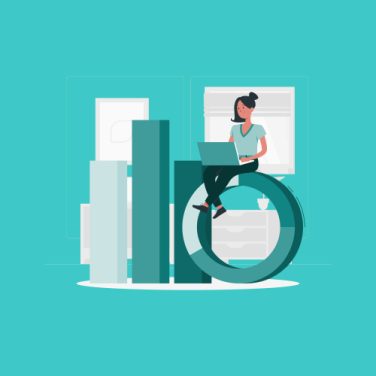Mobile time tracking app solutions have transformed attendance management by moving clock-in, clock-out, and timesheet processes onto employee smartphones.
The evolution from desktop software or paper-based timesheets now delivers on-demand access to real-time work data. They also provide audit-ready logs for labour compliance inspections.
This change addresses manual entry errors, delayed approvals, and disconnected reporting. With built-in compliance controls, mobile apps enforce labour policies across distributed and remote teams, improving operational accuracy and audit readiness.
What is a mobile time tracking app?
- A smartphone-based tool that records work hours in real time and replaces paper timesheets.
- Offers GPS geofencing and location stamps for precise clock-ins and clock-outs.
- Syncs data to the cloud, eliminating manual entry and desktop-only restrictions.
- Caters to remote workers, field service teams, and hybrid employees for flexible attendance tracking.
Key features of an effective mobile time tracking app
A robust mobile time tracking app delivers essential tools that align with employee needs and organisational policies.
Core modules focus on accurate data capture, while advanced features automate workflows and empower staff through self-service.
Selecting a solution with both sets of components ensures reliable attendance tracking and efficient workforce administration.
Core functionality:
- GPS and Geofencing-Enabled Clock-Ins: Employees create location-based timestamps within predefined zones set around job sites or office locations. The geofencing boundary prevents clock-ins outside approved areas, reducing time fraud. This feature, part of the Mobile Attendance Tracking module in MiHCM Lite and Enterprise, ensures accurate, location-based clock-ins and clock-outs for payroll integrity.
- Offline Mode: The app captures work hours even when devices lack cellular or wi-fi access. It stores entries locally and automatically syncs once connectivity resumes, preventing data gaps for field service crews. Offline mode supports remote operations in areas like construction sites, oil fields, or underground facilities, ensuring continuous tracking.
- Biometric Verification: Facial recognition and voice authentication verify individual identities at clock-in, stopping buddy punching. These biometric options integrate smoothly into the mobile interface, offering a secure yet user-friendly method. Data encryption safeguards biometric templates, maintaining employee privacy and reinforcing data integrity across the platform.
Beyond core functions, advanced capabilities extend automation and user engagement through dynamic features.
Advanced capabilities:
- Flexible Shift Adjustments: Through the app’s self-service portal, employees submit real-time requests to adjust shift start or end times after clock-in errors occur. Managers receive notifications and can review the original timestamp alongside location logs before approving corrections. This tool reflects the Flexible Shift Adjustments feature in MiHCM mobile solutions, streamlining exception handling.
- Automated Daily Timesheet Submission: At the end of each shift, the system collates clock-in and clock-out records and generates a daily timesheet ready for review. Using the Daily Timesheet Submission feature, approvals route automatically to designated supervisors, reducing manual entry and cutting administrative overhead by up to 30%.
- Push Notifications: Configurable alerts remind employees to clock in or out, notify managers of unapproved requests, and flag policy violations. Timely reminders improve compliance rates and reduce missed entries. Integration with MiA enables custom message templates, delivering branded notifications that guide users through the clock-in process.
Combining core functionality with advanced capabilities in a single mobile time tracking app ensures accurate attendance, policy adherence, and empowered employees, reducing administrative burden while delivering actionable insights for managers and HR teams.
Benefits of mobile self-service time tracking
Self-service features within a mobile time tracking app change how employees and managers interact with attendance data. By empowering staff to record and manage their own time, organisations gain operational visibility and cost efficiencies. The following benefits demonstrate the impact of mobile self-service attendance capabilities.
- Real-Time Visibility: Managers access live dashboards showing team attendance patterns. Detailed charts track hours by project, team, or location, enabling managers to spot anomalies and adjust resources quickly. Data from the MiHCM Analytics module further enhances decision-making.
- Reduction in Time Theft: GPS geofencing and biometric validation cut fraudulent clock-ins by up to 45%, improving payroll integrity and preventing buddy punching. Comprehensive audit trails record each timestamp, creating a secure record for compliance reviews and investigations.
- Increased Employee Engagement: Self-service autonomy lets staff view schedules, submit shift change requests, and track hours. Employees gain control over absences and overtime, leading to higher satisfaction and reduced HR inquiries. Engagement rises with transparent access, boosting timesheet submission rates by 60%.
- Compliance and Audit Trails: Automated record-keeping enforces labour policies and maintains detailed audit logs. Geostamps and digital signatures ensure each entry is verifiable, assisting companies in sector-specific compliance like healthcare or construction.
- Lower Administrative Costs: Paperless processes and automated workflows reduce manual data entry, slashing administrative workload by 30% when integrated with payroll solutions like MiHCM Enterprise. Teams redirect time toward strategic initiatives, such as talent development or process optimisation.
- Enhanced Workforce Planning: Up-to-date attendance analytics from a mobile time tracking app inform resource allocation and shift scheduling, leading to optimised workforce utilisation. Predictive insights forecast peak demand periods, allowing managers to scale staff levels efficiently.
Implementing mobile self-service time tracking safeguards payroll accuracy, reduces administrative effort, and fosters an engaged, proactive workforce prepared for dynamic work environments.
Top use cases for different teams
Organisations across sectors deploy a mobile time tracking app to address diverse workforce management scenarios.
Smartphone-based solutions offer flexibility that desktop timesheets cannot match. Whether for on-site technicians or gig workers, a time tracking app for work delivers real-time data capture and streamlined reporting.
Use cases span industries from healthcare and construction to retail and consulting, making these apps indispensable for modern workforce management.
- Field Service Teams: On-the-go technicians use a GPS time clock app to clock in at customer sites with GPS geofencing. Location stamps and timestamp accuracy ensure billing reflects actual work hours and reduce disputes.
- Remote and Hybrid Employees: Staff working from home or satellite offices record hours via the mobile app. Real-time syncing keeps HR and payroll teams updated, eliminating delays from manual desktop entries.
- Office Staff: Professionals replace manual timesheets by submitting daily hours through the app. Automated approval workflows route entries to managers, cutting paper use and administrative tasks.
- Freelancers and Contractors: Individuals leverage an employee time tracking app free version to log billable project hours. Exportable timesheets simplify invoicing and client reporting without subscription fees.
- Project Management: Project managers compare cross-team time logs using integrated dashboards from MiHCM Data & AI. Analytics reveal project costs, resource utilisation, and schedule variances for informed decision-making.
The adaptability of a GPS time clock app accommodates roles ranging from hourly field personnel to salaried office teams. Consistent tracking supports compliance with labour regulations, reduces payroll errors, and provides data-driven insights for future planning.
Best practices for implementing a mobile time tracking app
Successful implementation of a mobile time tracking app requires both technical configuration and user engagement strategies. By following proven practices, organisations maximise adoption and maintain data accuracy.
- Establish Clear Policies: Define acceptable clock-in locations, grace periods, and adjustment procedures. Document these rules in employee handbooks and mobile app guidelines to set transparent expectations.
- Offer Hands-On Training: Conduct live or virtual sessions covering app installation, clock-in methods, and timesheet submission. Provide quick-reference guides and video tutorials.
- Perform Regular Audits: Review location logs, biometric records, and adjustment requests periodically. Audits detect anomalies early and reinforce correct usage patterns across teams.
- Integrate Early: Connect the mobile time tracking app with payroll and HRIS systems such as MiHCM Enterprise from day one. Early integration avoids manual data transfers and reduces reconciliation work at period close.
- Encourage Adoption: Use incentives like recognition programs or small rewards for consistent app usage and timely timesheet submission. Gather feedback through surveys to address pain points.
- Monitor Metrics: Track key performance indicators such as clock-in compliance rate, timesheet submission percentage, and time correction requests. Share metrics with managers to maintain accountability and drive continuous improvement.
Adhering to these best practices results in a reliable attendance process, reduced errors, and enhanced employee satisfaction with self-service features.
Choosing the right mobile time tracking app for your business
Choosing the right mobile time tracking app involves evaluating free vs paid options, scalability, integration, usability, compliance, and support. The following comparison highlights key differences to guide your selection process.
| Criteria | Free Version | Paid Version |
|---|---|---|
| Cost | No license fees; basic features only | Subscription-based; full feature set |
| Scalability | Limited user count and locations | Handles unlimited users and sites |
| Integration | Manual export/import with payroll | Seamless API with HRIS, payroll, project tools |
| Usability | Basic interface; limited customisation | User-friendly UI; supports iOS and Android with branding |
| Compliance | Minimal audit logs; geofencing unavailable | Full audit trails; geo-stamps; regulatory updates |
| Support | Community forums; email assistance | Dedicated account manager; training and 24/7 support |
While free versions provide a low-cost entry point for small teams or freelancers, paid solutions offer the scalability, integrations, and compliance features required by growing enterprises. Evaluate your current needs and anticipate future growth to select the optimal mobile time tracking app.
Integrating mobile time tracking with HR and Payroll Systems
Integrating a mobile time tracking app with HR and payroll systems eliminates manual data transfers and improves accuracy.
The MiA mobile app syncs attendance data directly into MiHCM Enterprise payroll modules, automating calculations and approvals. Integration from day one reduces reconciliation tasks and accelerates pay cycles.
- Seamless Data Flow: Attendance records captured via the MiA mobile app transfer automatically into MiHCM payroll modules. This direct integration removes manual imports, reduces errors, and maintains a single source of truth for workforce data.
- Automated Calculations: Overtime, leave balances, and allowances calculate in real time based on predefined rules. The system applies local labour regulations and shift differentials, ensuring accurate pay and compliance.
- Centralised Dashboard: A unified view combines attendance and payroll data in one interface. Managers can verify hours, review exceptions, and confirm payroll accuracy before processing pay runs.
- HR Analytics: Leveraging MiHCM Data & AI, HR teams uncover attendance trends, productivity gaps, and staffing challenges. Analytics dashboards support data-driven decisions for resource planning and performance management.
- Customisable Workflows: Approval chains mirror organisational structures, routing time-off requests and shift adjustments through designated managers. Configurable rules enforce labour policies and ensure consistent processing.
- Data Security and Compliance: End-to-end encryption protects data in transit and at rest. Audit logs capture every adjustment, meeting regulatory requirements and safeguarding sensitive employee information.
Integrating mobile attendance tracking and daily timesheet submission within a unified HR and payroll ecosystem streamlines attendance management and empowers organisations to make informed decisions with HR analytics.


